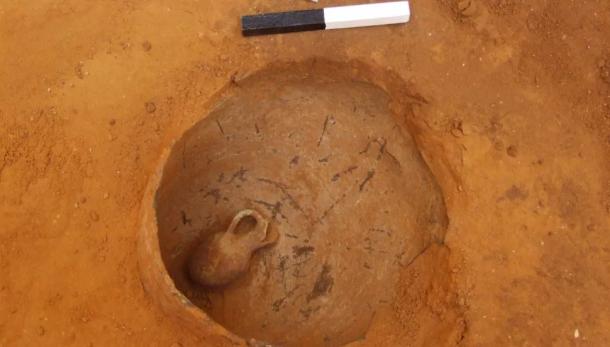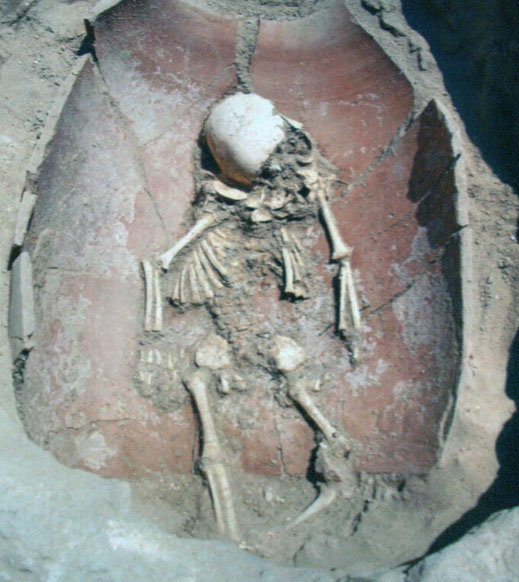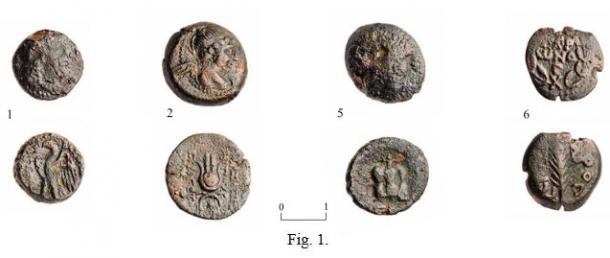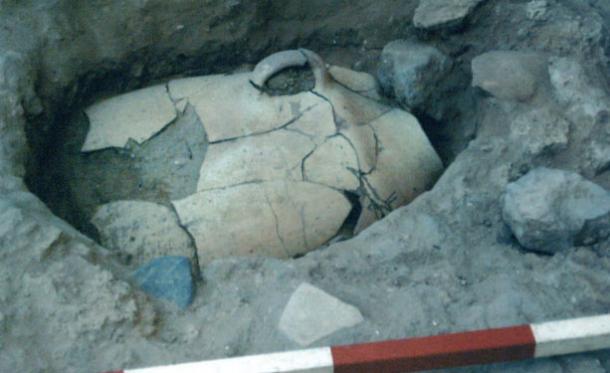Israeli archaeologists excavating in Jaffa have made further discoveries beneath the streets of this ancient Greek settlement, but this time, they’ve discovered a baby’s skeleton buried in a jar!

Back To The Mother’s Womb Or Mother Earth?
Jaffa is an ancient town in southern Tel Aviv and recent archaeological work has determined it was one of the oldest ports in the world, with origins dating to 4,000 years ago. Researchers recently presented several artifacts representing the city’s Greek roots, but now they’ve discovered a 3,800-year-old baby skeleton in a jar.

It’s a mystery why the baby’s skeleton was found in a jar in Jaffa in Israel. Source: Yoav Arbel/Israel Antiquities Authority
Professor Yoav Arbel, an archaeologist from the Israel Antiquities Authority, says no matter how shocking this discovery sounds, “such infant burials are not so uncommon.” However, the doctor says it remains a mystery why the infants were buried in this curious way. Arbel told Live Science that an obvious interpretation is that the children’s bodies were so fragile their loved ones may have attempted to protect them from the environment.

Example of a baby skeleton found in a jar burial in Ashkelon, Israel. (B. Doak)
But the jar was shaped “like a womb,” so the researcher thinks the deceased’s family might have attempted to return the child to the “bosom of Mother Earth,” or symbolically, “back into protection of his mother,” said Arbel.
An Explanation Why the Baby’s Skeleton was Found in a Jar
The discovery of the baby skeleton in a jar was detailed in the 100th issue of the journal Atiqot, which comes only a week after the last publication detailing Jaffa’s continuous occupation for four millennia. Over the last decade a wide range of artifacts have informed researchers of the town’s Hellenistic Greek origins through to the Crusader and Ottoman periods. Excavators have so far discovered 30 coins, at least two horses, pottery, 95 glass vessel fragments , 232 seashells, land snails, and three mother-of-pearl buttons.

Some of the coins discovered during the excavations at Jaffa in Israel. (Clara Amit/IAA)
Speaking of the baby skeleton in the jar, Dr. Arbel said people in Israel buried their children like this in different time periods – extending from the Bronze Age all the way to only a century ago. Known formerly as “Jar burials,” according to Dr. Alfredo Mederos Martin, who was not involved in the new study, this style of burying children was practiced all over the ancient world as early as 4500 BC. Dr. Martin says the different methods of performing this burial practicechange from place to place and this reflects changing concepts of the death event.
There Was Little Rest For Palestinian Buried Babies
According to the 2011 paper Funerary Iconography on an Infant Burial Jar from Ashkelon, jar burials in ancient Palestine were buried under floors in rooms of the house in which the child had lived. Specifically, they were buried mostly in “high traffic areas where household tasks were performed, thus connecting them with the main parts of everyday life.”

Ashkelon infant burial jar in situ. (B. Doak)
Professor Beth Alpert Nakhai of the University of Arizona explored infant jar burials in her 2011 article “Baby Burials in the Middle Bronze Age,” published in the Biblical Archaeology Review. This researcher said archaeologists in the Holy Land have found many infant jar burials throughout ancient Canaan and that “the custom reached its zenith in the Middle Bronze Age (2000–1550 BC).”
Explaining “why” children and babies were buried in jars in the ancient world, Dr. Nakhai, said infant mortality rates were high and that “a third of children died before their first birthday, and almost half died before their fifth birthday.” Dr. Nakhai believes that the placement of infant jar burials within the home reflects “a desire on the part of dead infant’s mother to care for her child in death, as she would have cared for that child in life.”
Furthermore, being so young, these young children hadn’t undergone rites of initiation or integration: meaning they were “not yet viewed as full members of society.” Therefore, this specific method of burial was perhaps to “keep them protected and close to home.” Alternatively, as is suggested in the new paper by Dr. Arbel that the jar represented the womb of Mother Earth, to which the children returned.